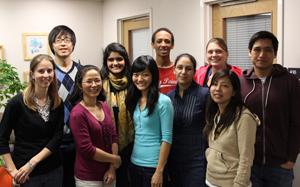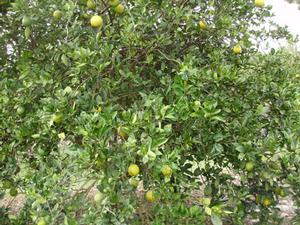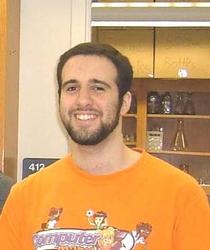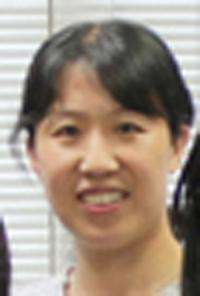
Plants are constantly challenged by pathogens and pests. Billions of dollars are lost each year worldwide due to plant diseases. Understanding how plants defend themselves against invaders will not only advance our knowledge of plant innate immunity, but more importantly, will also help us to develop effective strategies to improve disease-resistance traits in economically important crop plants. The two main research areas in my laboratory are:
1. Investigating mechanisms of disease resistance in Arabidopsis thaliana
2. Applying knowledge of Arabidopsis defense to disease prevention in crop plants
Projects
Investigating mechanisms of disease resistance in Arabidopsis thaliana
Upon pathogen infection, plants activate an array of defense responses, including reprogramming the expression of thousands of genes. However, a major challenge in the field is to determine which genes regulate defense as opposed to being diagnostic for infection. In order to discover novel defense genes, we performed a high throughput genetic screen, based on the unique Arabidopsis mutant called accelerated cell death 6-1(acd6-1). ACD6 encodes a membrane protein with ankyrin repeats and was shown to be a major determinant of fitness in Arabidopsis (Lu et al., 2003; Todesco et al.). acd6-1 is a gain-of-function mutant that demonstrates constitutive defense, severe cell death, and extreme dwarfism and accumulates high levels of salicylic acid (SA), the key defense signaling molecule (Rate et al., 1999; Lu et al., 2003). Interestingly, second site mutations disrupting SA accumulation and/or SA signaling suppress the small size of acd6-1, suggesting thatacd6-1-conferred dwarfism is inversely correlated with its defense levels (Lu et al., 2009). Therefore, the size change of acd6-1 can be used as a convenient readout in a large-scale screen of acd6-1 suppressors (sups), which may harbor mutations disrupting important defense genes. In addition, we have also exploited this unique feature of acd6-1 in elucidating functional relationships among components in defense signaling networks (Ng et al., 2011).
Figure panel A: ACD6 protein structure and the acd6-1 mutant.
Figure panel B: the size of acd6-1 is sensitized to the change of defense levels.
Selected references
- Lu, H., Rate, D.N., Song, J.T., and Greenberg, J.T. (2003). ACD6, a novel ankyrin protein, is a regulator and an effector of salicylic acid signaling in the Arabidopsis defense response. Plant Cell 15, 2408-2420.
- Lu, H., Salimian, S., Gamelin, E., Wang, G., Fedorowski, J., LaCourse, W., and Greenberg, J.T. (2009). Genetic analysis of acd6-1 reveals complex defense networks and leads to identification of novel defense genes in Arabidopsis. Plant J 58, 401-412.
- Ng, G., Seabolt, S., Zhang, C., Salimian, S., Watkins, T.A., and Lu, H. (2011). Genetic dissection of salicylic acid-mediated defense signaling networks in Arabidopsis. Genetics, in press.
- Rate, D.N., Cuenca, J.V., Bowman, G.R., Guttman, D.S., and Greenberg, J.T. (1999). The gain-of-function Arabidopsis acd6 mutant reveals novel regulation and function of the salicylic acid signaling pathway in controlling cell death, defenses, and cell growth. Plant Cell 11, 1695-1708.
- Todesco, M., Balasubramanian, S., Hu, T.T., Traw, M.B., Horton, M., Epple, P., Kuhns, C., Sureshkumar, S., Schwartz, C., Lanz, C., Laitinen, R.A., Huang, Y., Chory, J., Lipka, V., Borevitz, J.O., Dangl, J.L., Bergelson, J., Nordborg, M., and Weigel, D. (2010). Natural allelic variation underlying a major fitness trade-off in Arabidopsis thaliana. Nature 465, 632-636.
Applying knowledge of Arabidopsis defense to disease prevention in crop plants

The ultimate goal of our research is to use the knowledge obtained from the model plant Arabidopsis to improve disease-resistance traits of crop plants and to mitigate crop loss caused by pathogens and pests. Towards this goal, we have been working with USDA scientists to identify defense regulatory genes in citrus and soybean and seek molecular solutions to improve disease resistance in these plants. Citrus and soybean are two crop plants essential for the US economy. Successful production of both crops can be severely affected by devastating diseases caused by pathogens and pests. For citrus, the citrus greening disease, also called Honglong Bin, is a destructive disease caused by the parasitic bacteria named Liberibacters that live in the phloem tissue of a citrus tree. Liberibacters are transmitted by the small insects psyllids and are endemic to a variety of citrus species and related plants. Unfortunately, Liberibacters do not respond to treatments of various bactericides and no in vitro culture of the bacteria has been successful so far. Therefore, it has been challenging to contain and eradicate the disease. For soybean, nematodes- and rust fungi-caused diseases account for the major loss in soybean each year.
Current Members
 Arianne Tremblay
Arianne Tremblay
PhD, postdoc
 Safae Hamdoun
Safae Hamdoun
Graduate Student: PhD Biological Sciences
 Chong Zhang
Chong Zhang
Graduate Student: PhD Biological Sciences
 Michael Fulson-Woytek
Michael Fulson-Woytek
Graduate Student: PhD Molecular/Cell Biology
 Nicholas Seitz
Nicholas Seitz
Graduate Student: MS Biological Sciences
 Laurene Dampare
Laurene Dampare
Graduate Student: MS Biological Sciences
 Gina Ng
Gina Ng
AMB student, Technician
Former Members
|
Rena Shimizu
PhD, postdoc
|
 |
|
Sasan Salimian
Undergraduate
Sasan worked in the Lu lab as an undergraduate researcher for three years. He was involved in analyzing acd6-1 suppressors. He was a Meyerhoff scholar and also received the MARC award and undergraduate research award. He is coauthor for two papers published in the Lu lab. Sasan is currently a medical school student at UMB.
|
 |
|
Timley Swift
MS
Timley was an AMB student and took on a project in the Lu lab to study several ACD6 homologs for their roles in regulating plant defense. She also participated in a genetic analysis of functional relationships among key defense regulatory genes.
|
 |
|
Savana Seabolt
Technician
Savana worked in the Lu lab first as an undergraduate researcher and then as a technician for about two and half years. She participated in several projects, including investigating salicylic acid-mediated defense signaling networks and studying the function of WIN3 in defense regulation. She also independently identified a novel gene responsible for programmed cell death in Arabidopsis, using the map-based cloning approach. Savana is currently working in a biotech company.
|
 |
|
Margarita Tsionsky
Undergraduate
Rita received the Undergraduate Research Award to analyze the roles of PHT4;1 family members in regulating Arabidopsis defense.
|
 |
|
Guoying Wang
PhD, postdoc
Guoying led the NSF-funded project to characterize the role of PHT4;1 in regulating plant innate immunity.
|
 |
|
Guangfeng Wang
PhD, postdoc
Guangfeng led a project to investigate ways to manipulate defense signaling in citrus. He also worked on further characterizing the function of the WIN3 gene. His results showed that 1) WIN3 regulates broad disease resistance to both bacterial and fungal pathogens, 2) WIN3 acts additively with several defense regulators to affect salicylic acid-mediated defense, and 3) WIN3 and NPR1 play novel roles in regulating flowering time besides defense control. He is currently a postdoc at NC State University.
|
 |
|
Jiangli Shi
Visiting PhD student
Jiangli was a visiting PhD student sponsored by Chinese Scholarship Council and worked in the Lu lab for a year. She was involved in cloning several acd6-1 suppressor genes.
|
 |
|
Stephanie Battle
Undergraduate
Stephanie worked in the Lu lab as an undergraduate researcher. She was a Meyerhoff Scholar and also received the MARC award and the undergraduate research award. She participated in a project to analyze the structure and function of the novel defense protein PHT4;1. She is currently pursuing a PhD degree at University of Washington.
|
 |
